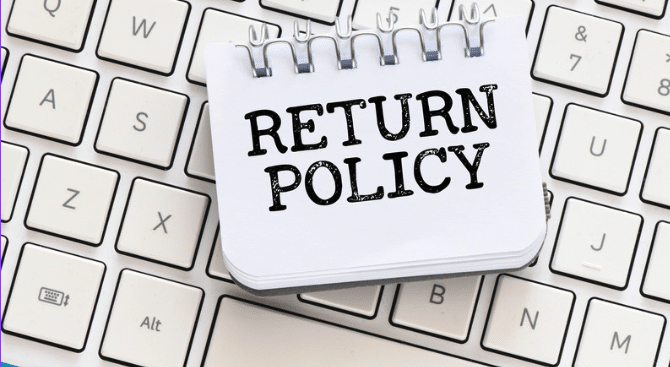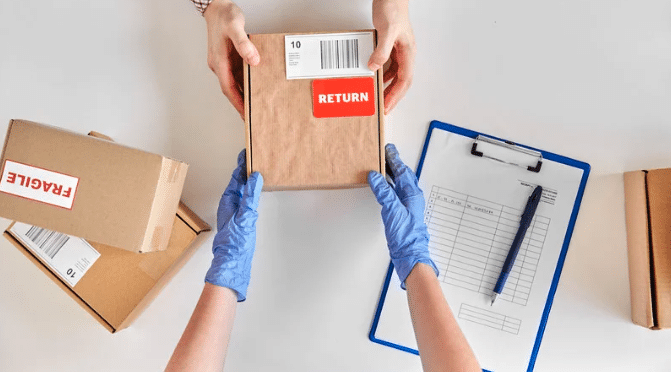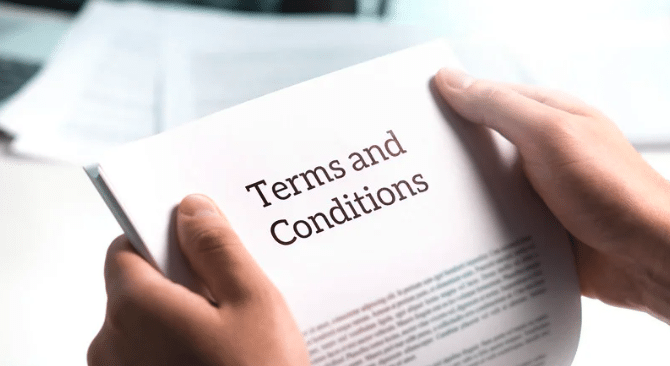As an Amazon seller, are you aware that being prepared for customer returns is one of the keys to thriving in the competitive e-commerce landscape? So, instead of dreading returns, why not view them as an opportunity to empower yourself and provide exceptional customer service? In this 2024 Amazon seller’s guide, we’ll delve into the details of Amazon’s return policy, equipping you with the knowledge and strategies to handle customer returns and turn them into positive experiences.
Imagine the confidence you’ll exude when addressing customer concerns and resolving return issues swiftly. Get ready to take control of returns, transform them into opportunities, and elevate your Amazon business to new heights. Let’s examine Amazon’s return policy now and unlock your full potential as a seller!
Understanding Amazon’s Return Policy

Amazon’s return policy outlines the procedures that buyers must follow when returning items purchased on Amazon.
General Overview
Amazon’s return policy allows buyers to return items within a certain time frame for a full refund or exchange. This policy applies to all items sold on Amazon, including those sold by third-party sellers.
As a seller, it is important to note that if a buyer requests a return, you will be responsible for handling the return and issuing a refund or replacement. Amazon will deduct the refund amount from your account balance, so make sure you have enough funds available.
Return Time Frame
The return time frame for most items on Amazon is 30 days from the date of delivery. However, some items may have a different return time frame, such as electronics which have a 14-day return window.
It is important to note that the return time frame begins from the date the buyer receives the item, not the date the item was purchased. This means that if there are any delays in shipping or delivery, the return time frame may be shorter than expected.
Return Shipping Fees
In most cases, buyers are responsible for paying the return shipping fees when returning an item on Amazon. However, there are some instances where the seller may be responsible for these fees, such as if the item was damaged or defective.
If you are a seller on Amazon, it is important to understand the return shipping fees for your items and include this information in your product listings. This can help avoid confusion and ensure that buyers are aware of any potential costs associated with returning an item.
Seller’s Responsibilities
As an Amazon seller, it is your responsibility to ensure that your customers are satisfied with their purchases. This includes handling returns and issuing refunds in accordance with Amazon’s policies. Here are some key things you need to know about your responsibilities as a seller:
Issuing Refunds
When a customer requests a refund, you are responsible for issuing it promptly. Amazon’s policy requires that you issue a refund within two business days of receiving the returned item. If you fail to issue a refund within this timeframe, Amazon may issue a refund on your behalf and charge you for the cost.
Handling Return Requests
When a customer requests a return, you must respond promptly and provide clear instructions on how to return the item. You are responsible for ensuring that the item is returned in its original condition and packaging. If the item is damaged or missing parts, you may be responsible for issuing a partial refund or denying the return altogether.
Restocking Fees
If you choose to charge a restocking fee for returned items, you must clearly state this in your product listing. Restocking fees are limited to 20% of the item’s price, and they may not be charged for items that are defective, damaged, or not as described. If you fail to disclose your restocking fee policy, Amazon may remove your listing or take other disciplinary action.
Product Categories and Conditions

When it comes to Amazon’s return policy, there are different guidelines for different product categories and conditions. As a seller, it’s important to understand these guidelines to ensure that you are following the correct procedures and providing the best customer service possible.
New, Used, and Refurbished Items
For new items, customers have 30 days from the date of delivery to return the product for a full refund. The item must be in its original condition, unopened, and with all original packaging and accessories included. If the item is not returned in its original condition, the customer may receive a partial refund or no refund at all.
Used and refurbished items have a different return policy. Customers have 30 days from the date of delivery to return the product for a full refund. However, the item must be in the same condition as it was when it was sold, and all accessories and packaging must be included. If the item is not returned in the same condition, the customer may receive a partial refund or no refund at all.
Special Return Considerations
Some product categories have special return considerations. For example, clothing and shoes must be returned unworn and with all original tags attached. Jewelry must be returned in its original packaging and with all certificates of authenticity. Electronics must be returned with all original packaging and accessories, and the serial number must match the one on file with Amazon.
Some products may not be eligible for return at all. This includes hazardous materials, perishable items, and customized products. As a seller, it’s your responsibility to ensure that you are aware of these restrictions and communicate them clearly to your customers.
Return Process for Sellers

As a seller on Amazon, it is important to understand the return process to ensure a smooth experience for both you and your customers. In this section, we will outline the steps involved in the return process for sellers.
Return Authorization
When a customer wants to return a product, they must first request a return authorization from Amazon. Once the return request is approved, Amazon will provide the customer with a return label to send the product back to you.
As a seller, it is important to monitor your return requests and respond promptly to any that require action on your part. You can view and manage your return requests through your seller account on Amazon.
Managing Return Disputes
Occasionally, a customer may dispute a return for various reasons such as a damaged or defective product. As a seller, it is important to handle these disputes in a timely and professional manner.
If you believe the return is not valid, you can dispute it through your seller account. Be sure to provide any necessary evidence to support your dispute, such as photos of the product before it was shipped.
If a return dispute cannot be resolved between you and the customer, Amazon may step in to mediate the situation. It is important to cooperate with Amazon during this process to ensure a fair resolution for all parties involved.
Impact on Seller Performance

As an Amazon seller, understanding the impact of returns on your performance metrics is crucial. Two key metrics that are affected by returns are your seller ratings and your A-Z Guarantee claims.
Metrics and Ratings
Returns can hurt your seller metrics and ratings. The Amazon algorithm takes into account the number of returns and the reasons for the returns when calculating your metrics. If you have a high number of returns, your metrics and ratings may suffer, which can ultimately impact your ability to sell on the platform.
To mitigate the impact of returns on your metrics and ratings, make sure to provide accurate product descriptions, images, and sizing information. This can help reduce the number of returns due to misrepresentation or incorrect sizing.
A-Z Guarantee Claims
Amazon’s A-Z Guarantee protects customers who do not receive their orders or receive items that are significantly different from the product description. A high number of A-Z Guarantee claims can have a negative impact on your seller performance and may result in account suspension or termination.
To avoid A-Z Guarantee claims, make sure to provide accurate tracking information and respond promptly to customer inquiries. Additionally, providing clear and detailed product descriptions can help reduce the number of claims due to misrepresentation.
Legal and Policy Compliance

As an Amazon seller, it is crucial to comply with Amazon’s policies and legal requirements. Failure to do so may result in account suspension or termination.
Amazon’s Marketplace Rules
Amazon has strict rules and policies that sellers must abide by to ensure a fair and safe marketplace for buyers. These rules cover various aspects such as product listing, pricing, customer service, and shipping. Sellers must ensure that their products comply with Amazon’s listing policies and are accurately described. Any attempts to manipulate product reviews, ratings, or customer feedback are strictly prohibited. Additionally, sellers must provide excellent customer service and respond to customer inquiries and complaints promptly.
Consumer Protection Laws
Sellers must also comply with consumer protection laws in their respective countries. These laws protect buyers from unfair business practices, false advertising, and defective products. Amazon requires sellers to comply with all applicable laws and regulations, including those related to product safety and labeling. Sellers must also provide accurate and complete information about their products, including any potential hazards or risks.
How to Minimize Amazon Returns
By proactively addressing the factors that often lead to returns, you can significantly reduce their impact on your business. Here are some effective ways to minimize returns and enhance the overall shopping experience for your customers:
Accurate and Detailed Product Descriptions
Provide clear and comprehensive product descriptions that accurately represent the item’s features, specifications, and condition. Include high-quality images from various angles, highlighting any imperfections. By setting realistic expectations, you can reduce the likelihood of customers returning items due to misunderstandings or dissatisfaction.
Quality Control and Inspection
Prioritize thorough quality control and inspection processes before shipping products to customers. Ensure that items are in excellent condition, free from defects, and properly packaged to prevent damage during transit. By delivering high-quality products, you minimize the chances of customers returning items due to defects or damages.
Accurate Sizing and Measurements

For clothing, shoes, and other size-dependent items, provide accurate sizing charts and measurements. Clear size guidelines help customers choose the right fit, reducing the likelihood of returns due to incorrect sizing. Consider including tips or instructions for measuring to assist customers in making informed decisions.
Prompt and Responsive Customer Support
Establish a reliable and responsive customer support system to address any inquiries or concerns promptly. Timely and helpful responses can prevent potential returns by resolving issues or providing alternative solutions. Be proactive in addressing customer feedback and reviews, demonstrating your commitment to their satisfaction.
Post-Purchase Communication
Follow up with customers after their purchase to ensure their satisfaction and provide assistance if needed. Personalized emails or messages expressing your willingness to address any concerns can prevent returns by showing customers that you genuinely care about their experience.
Remember, reducing returns not only increases customer satisfaction but also improves your bottom line by saving time, resources, and potential negative impacts on your seller metrics. Embrace these practices and set yourself up for long-term success in the world of Amazon selling.
Conclusion
Accurate product descriptions, quality control, and responsive customer support are key factors in reducing returns. Clear return policies and post-purchase communication further contribute to a positive shopping experience. By prioritizing customer satisfaction and proactively addressing potential issues, you’ll build trust, foster long-term relationships, and differentiate yourself as a reliable seller on Amazon.
Embrace the power of minimizing returns as a means to elevate your business. Continuously evaluate and optimize your processes to adapt to changing customer needs and market trends. With dedication and a customer-centric mindset, you’ll position yourself for long-term success in the competitive world of e-commerce.
Wishing you all the best as you empower yourself with the mastery of Amazon’s return policy. May your journey as an Amazon seller be filled with satisfied customers, growing sales, and lasting success!
Incidentally, are you here trying to troubleshoot what to do with a suspended seller account on Amazon? Find out everything you need to know about suspended Amazon seller accounts here.
Frequently Asked Questions
What is the time limit for returns on Amazon?
Amazon’s return policy allows customers to return items within 30 days of receipt for most products. However, some items may have different return policies, such as electronics, which have a 14-day return window. Make sure to check the return policy for each item you sell on Amazon to avoid any confusion.
How do I avoid restocking fees on Amazon?
To avoid restocking fees on Amazon, make sure that the item you are selling is in its original condition and packaging. Additionally, make sure to accurately describe the item in your listing to avoid any misunderstandings or disputes with customers. If a customer returns an item that is not in its original condition, you may be subject to a restocking fee.
Who pays for Amazon free returns?
Amazon covers the cost of free returns for customers, and sellers are responsible for covering the cost of return shipping for items that are not defective or damaged. If an item is defective or damaged, Amazon may provide a prepaid return label for the customer.
What are Amazon’s return guidelines that sellers must follow?
Amazon requires sellers to follow certain guidelines when accepting returns from customers. These guidelines include accepting returns within the specified return window, issuing refunds within 2 business days of receiving the returned item, and ensuring that the item is in its original condition and packaging.
How does the refund process work for Amazon sellers?
When a customer returns an item, Amazon will notify the seller and provide information on the reason for the return. The seller must then issue a refund within 2 business days of receiving the returned item. If the item is not in its original condition or packaging, the seller may have to pay a restocking fee.
